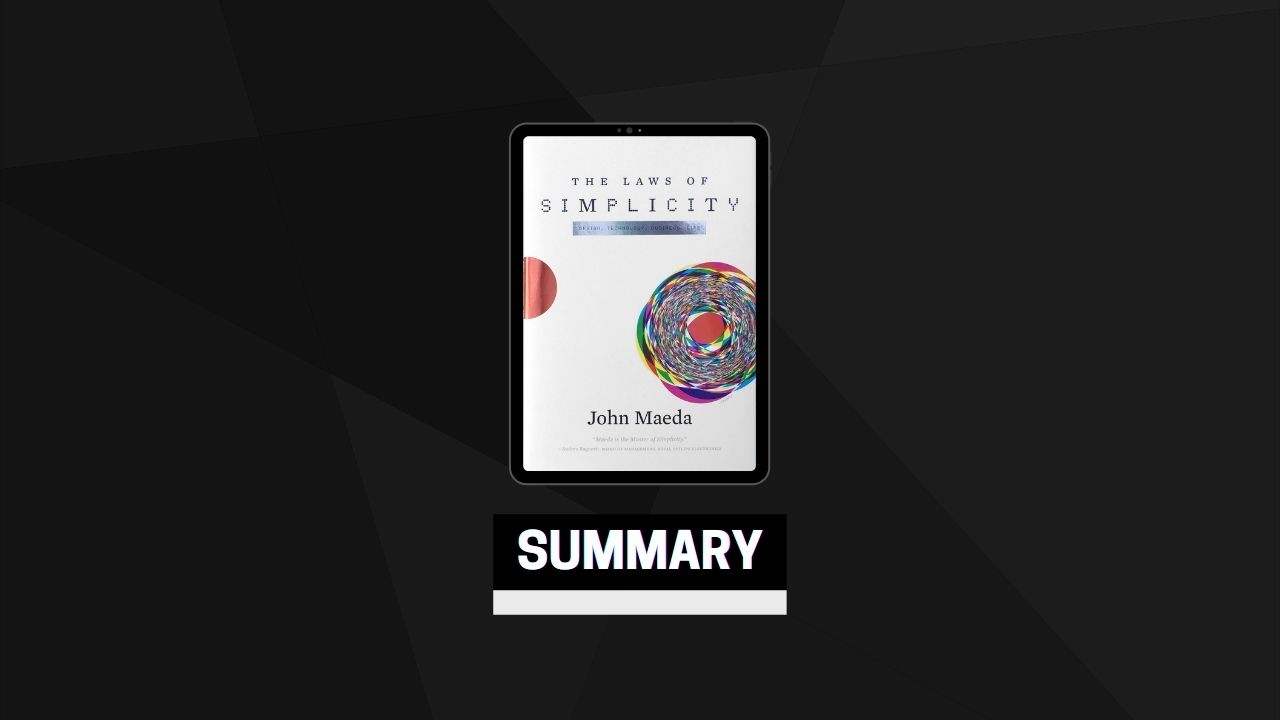Law 1 Reduce
The easiest way to simplify a system is to remove functionality. Today’s DVD, for instance, has too many buttons if all you want to do is play a movie. A solution could be to remove the buttons for Rewind, Forward, Eject, and so forth until only one button remains: Play.
But what if you want to replay a favorite scene? Or pause the movie while you take that all-important bathroom break? The fundamental question is, where’s the balance between simplicity and complexity?
On the one hand, you want a product or service to be easy to use; on the other hand you want it to do everything that a person might want it to do.
The process of reaching an ideal state of simplicity can be truly complex, so allow me to simplify it for you. The simplest way to achieve simplicity is through thoughtful reduction. When in doubt, just remove. But be careful of what you remove.
Law 2 Organize
The home is usually the first battleground that comes to mind when facing the daily challenge of managing complexity. There are three consistent strategies for achieving simplicity in the living realm: 1) buy a bigger house, 2) put everything you don’t really need into storage, or 3) organize your existing assets in a systematic fashion.
These typical solutions have mixed results. At first, a larger home lowers the clutter to space ratio. But ultimately, the greater space enables more clutter. The storage route increases the amount of empty space, but it can be immediately filled in with more stuΩ that will need to go into storage. The final option of implementing a system takes the form of things like closet organizers, that help bring structure to the chaos as long as the organizing principles can be obeyed.
Law 3 Time
The average person spends at least an hour a day waiting in line. Add to this the uncountable seconds, minutes, weeks spent waiting for something that might have no line at all.
Some of that waiting is subtle. We wait for water to come out of the faucet when we turn the knob. We wait for water on the stove to boil, and start to feel impatient. We wait for the seasons to change. Some of the waiting we do is less subtle, and can often be tense or annoying: waiting for a Web page to load, waiting in bumper-to-bumper or waiting for the results of a dreaded medical test.
No one likes to suΩer the frustration of waiting. Thus all of us, consumers and companies alike, often try to find ways to beat the ticking hand of time. We go out of our way to find the quickest option or any other means to reduce our frustration. When any interaction with products or service providers happens quickly, we attribute this e≈ciency to the perceived simplicity of experience.
Law 4 Learn
Operating a screw is deceptively simple. Just mate the grooves atop the screw’s head to the appropriate tip—slotted or Phillips—of a screwdriver. What happens next is not as simple, as you may have noted while observing a child or a woefully sheltered adult turning the screwdriver in the wrong direction.
So while the screw is a simple design, you need to know which way to turn it. Knowledge makes everything simpler. This is true for any object, no matter how di≈cult. The problem with taking time to learn a task is that you often feel you are wasting time, a violation of the third Law. We are well aware of the dive-in-head-first approach—“I don’t need the instructions, let me just do it.” But in fact this method often takes longer than following the directions in the manual.
Law 5 Differences
Nobody wants to eat only dessert. Even a child that is allowed to eat ice cream three meals a day will eventually tire his sweet tooth. By the same token, nobody wants to have only simplicity. Without the counterpoint of complexity, we could not recognize simplicity when we see it. Our eyes and senses thrive, and sometimes recoil, whenever we experience diΩerences.
Simplicity and complexity need each other. The more complexity there is in the market, the more that something simpler stands out. And because technology will only continue to grow in complexity, there is a clear economic benefit to adopting a strategy of simplicity that will help set your product apart. That said, establishing a feeling of simplicity in design requires making complexity consciously available in some explicit form. This relationship can be manifest in either the same object or experience, or in contrast with other oΩerings in the same cat-egory—like the simplicity of the iPod in comparison to its more complex competitors in the MP3 player market.
Law 6 Context
There is something about how our eyes and hands work in concert. Picture yourself at the pottery wheel, sculpting each detail with intense concentration. Everything that matters is happening in the foreground, at your fingertips, and is completely within your immediate field of vision. Your cell phone goes oΩ or the doorbell rings, and this tightest of control loops is disrupted while the background surges into the foreground. Thankfully you notice that a pot on the stove is boiling over, or realize that your hand has been cut and unattendedly bleeds.
What lies in the periphery of simplicity is definitely not peripheral. The sixth Law emphasizes the importance of what might become lost during the design process. That which appears to be of immediate relevance may not be nearly as important compared to everything else around. Our goal is to achieve a kind of enlightened shallowness. It is befitting that we start this trek by talking about nothing.
Law 7 Emotion
From a rational perspective, simplicity makes good economic sense. Simple objects are easier and less expensive to produce, and those savings can be translated directly to the consumer with desirable low prices. As evidenced by the extremely aΩordable line of simple products from furniture retailer Ikea, simplicity benefits the frugal shopper. However, there are some people who would say that simplicity is not only cheap, but would add that it looks cheap as well. A strong sense of self expression belies all of us humans, and many such decisions we make are not driven by logic alone.
The seventh Law is not for everyone—there will always be the die-hard Modernists who refuse any object that is not white or black, or else with clear or mirrored surfaces. My mother finds the iPod entirely unattractive. And while the older generation isn’t Apple’s targeted market (for the moment, at least), I am still the dutiful son I was raised to be, and so I find the seventh Law a necessary component in the simplicity toolbox. More emotions are better than less. When emotions are considered above everything else, don’t be afraid to add more ornament or layers of meaning.
Law 8 Trust
Imagine an electronic device with only one unlabeled button on its surface. Pressing the button would complete your immediate task. Do you want to write a letter to Aunt Mabel? Go ahead and press the button. Click. A letter has been sent. You know with absolute certainty that it went out and expressed exactly what you needed. That’s simplicity. And we are not far from that reality.
Every day the computer becomes increasingly smarter. It already knows your name, address, and credit card number. Knowing where Aunt Mabel lives and having watched you write a letter to her before, the computer can send a fair approximation of a kindly email to her from you. Just click a button and the deed could be done—finito. Whether the message is coherent and keeps you on dear Aunt Mabel’s Christmas list is another story, but that is the price of not having to think. In simplicity we trust.
Law 9 Failure
Some things can never be made simple. Knowing that simplicity can be elusive in certain cases is an opportunity to make more constructive use of your time in the future, instead of chasing after an apparently impossible goal. However there’s no harm in initiating the search for simplicity even when success is deemed as too costly or otherwise out of reach.
There’s always an ROF (Return On Failure) when you try to simplify—which is to learn from your mistakes. When faced with failure, a good artist, or any other member of the creative class, leverages the unfortunate event to radically shift perspective. One man’s failed experiment in simplicity can be another man’s success as a beautiful form of complexity. Simplicity and complexity shift with subtle changes in point of view.
Law 10 The One
The Japan National Rugby Team was once a mighty force that has fallen in recent years. Led by a new French coach, Jean-Pierre Elissalde, they appear to be on the rise. When Ellisalde first came aboard, he assessed the team’s basic problem—the players were too predictable. As they moved up the field, the ball was passed between team members with a mechanical accuracy that was easy for their opponents to predict, and thus consistently topple. Elissalde urged his players “to become like the bubbles in a glass of champagne,” floating upward in unexpected and elegantly fluid ways. The Japanese team had to learn how to operate based upon intuition versus intellect.
Simplicity is about subtracting the obvious, and adding the meaningful.


